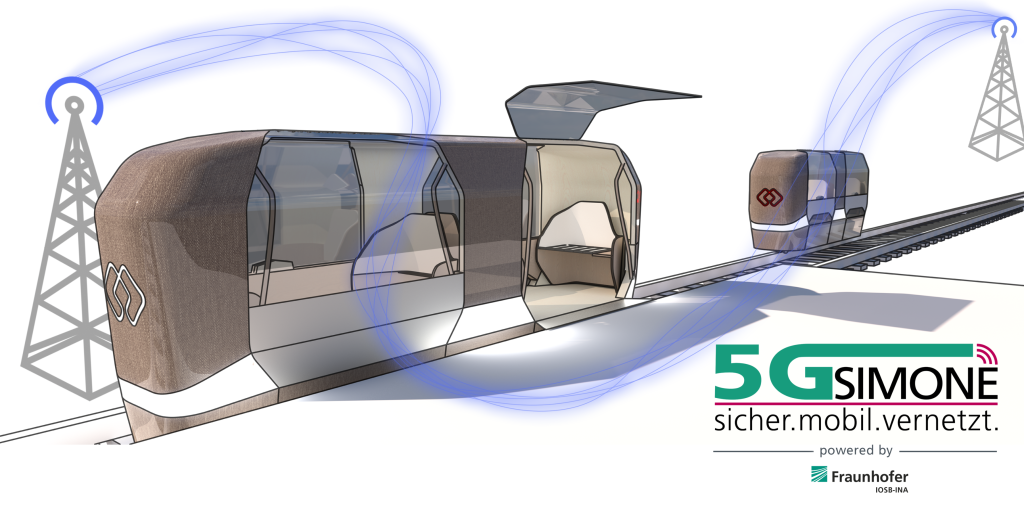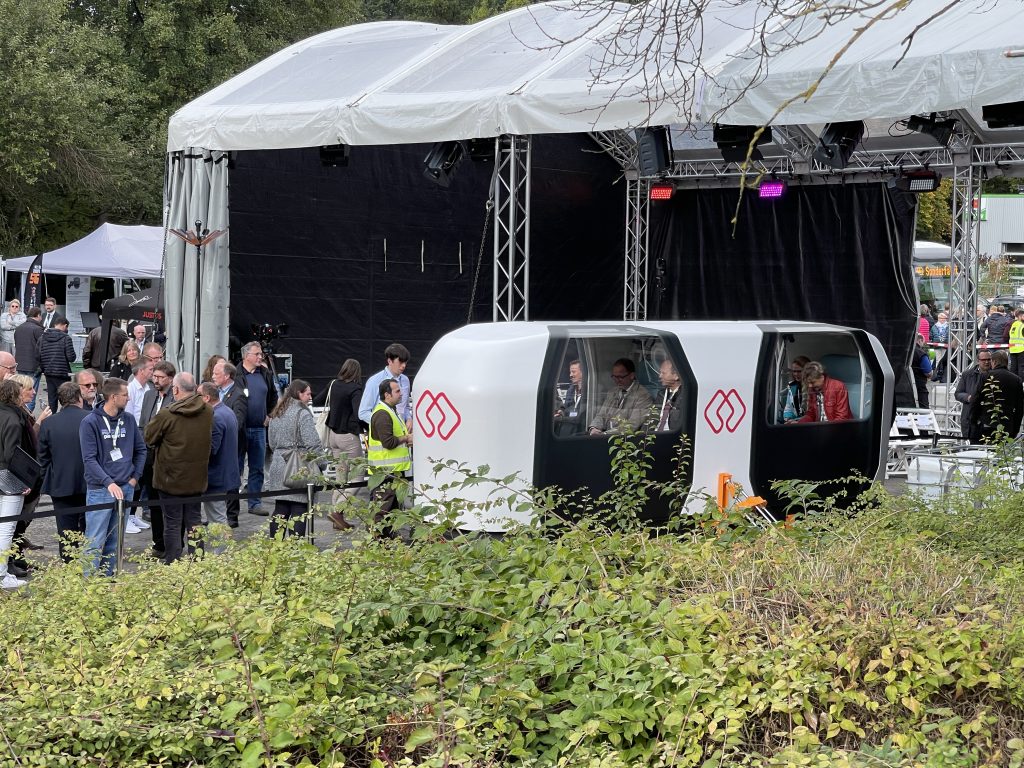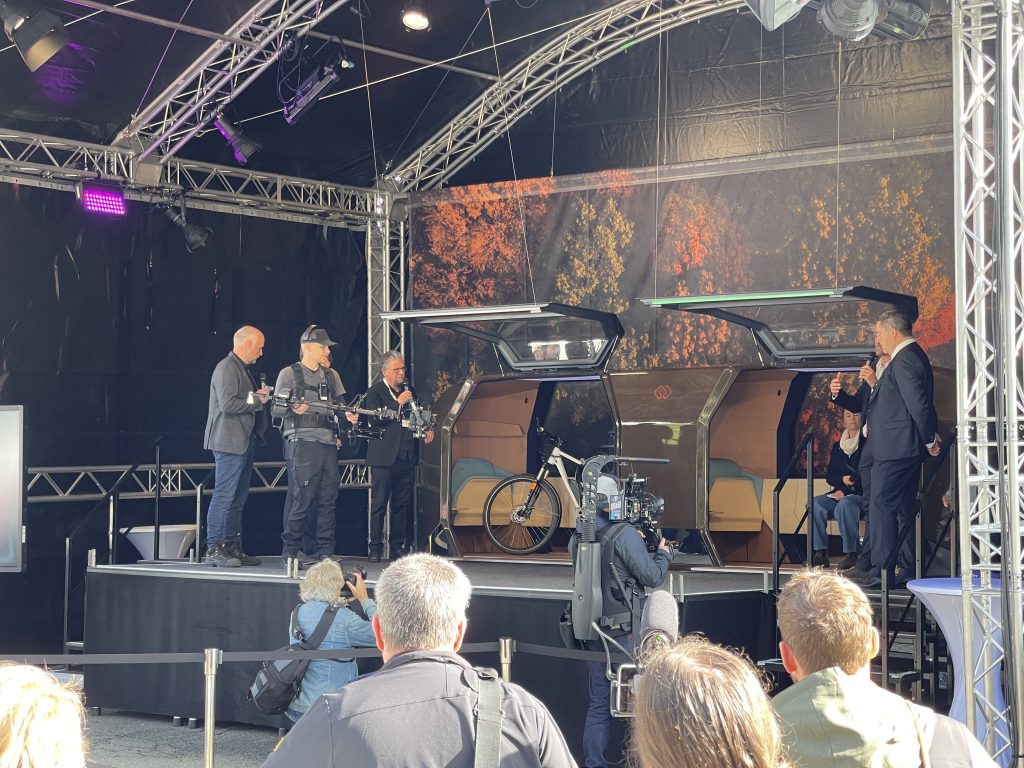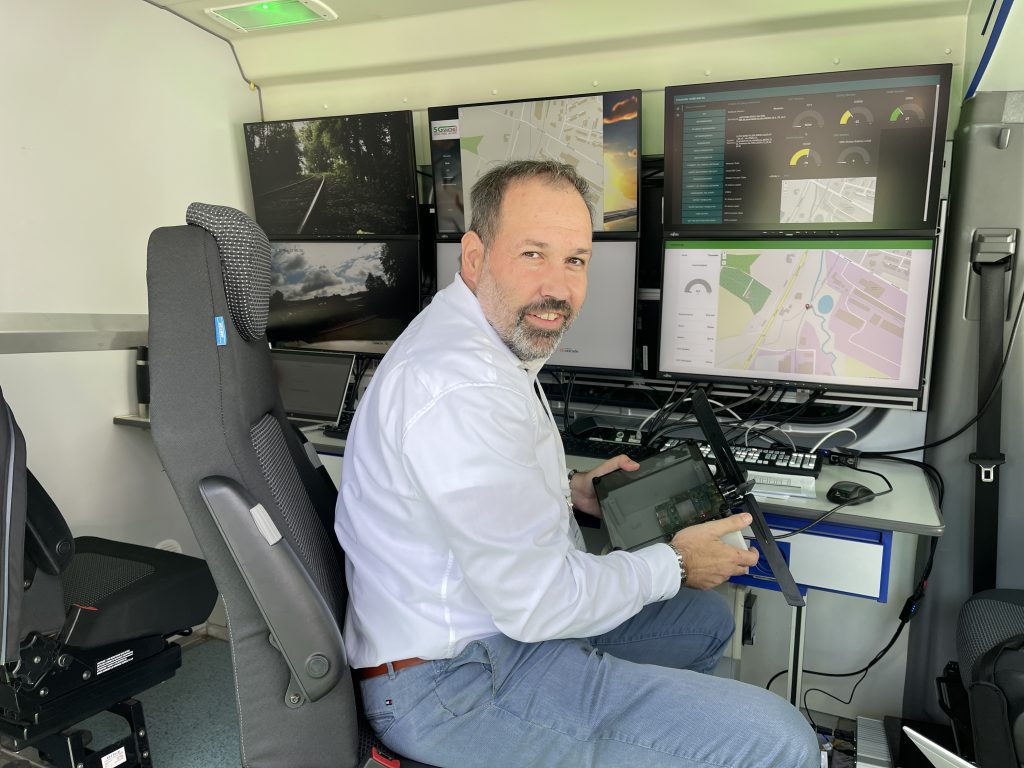Exploring the possibilities of the 5G mobile radio standard using the example of autonomous
driving monorail vehicles
“5G SIMONE” (securely.mobile.networked with 5G) is a research project from the 5G.NRW funding competition. Innovative 5G projects are funded here in order to accelerate the digitalization of NRW. Among other things, the networking of driverless transport systems, such as the MonoCab, is being tested. This type of innovative monorail vehicle is intended to run on disused sections of track and make public transport more attractive there again. The vehicles are battery-powered and run automatically or, in the future, autonomously. This type of transport system can be a big step towards a significantly more efficient, faster, and more reliable transport option.
The goal of 5G SIMONE: efficient driving through networking with 5G
The automated monorail vehicle is to be networked using 5G technology in such a way that efficient and comfortable operation of the railway is made possible. This includes real-time networking of the vehicle controllers, communication with the environment in order to detect possible hazards at an early stage, communication with the control centre, communication between the vehicles and the transmission of high-resolution video streams. In the project, the 5G radio network with its services is being researched as a network for all applications. The provision of 5G services is hybrid: On the one hand, a 5G standalone campus network of Fraunhofer IOSB-INA is used (the private network), on the other hand, the public mobile network of the German Telekom is used. Different requirements and transmission scenarios will be used to research how powerful the 5G campus network and the public 5G mobile network already are and what possibilities they offer today. In addition, an experimental basis for the development of further services will be made possible, which can offer future, innovative mobility solutions.
The challenge
The vehicles are integrated into the private and public 5G mobile network. After the implementation of the network infrastructure, the individual applications are integrated. These include the perception technology (high-resolution cameras and lidar sensors), the transmission of real-time controller data between the vehicles and real-time communication with the external control centre. This requires the lowest possible latency as well as low jitter on the entire communication route in the bidirectional direction. Today’s wireless networking solutions and 4G technology cannot sufficiently meet the latency and reliability requirements.

Other technical and scientific objectives
The findings of this project are to be used for other closed-loop control applications. “Through this, we expect research results with multiple benefits, also in other industries,” says Sebastian Schriegel, Group Leader for Industrial Communication at Fraunhofer IOSB-INA in Lemgo. “In addition, the combination of the “MONOCAB OWL” and “5G Simone” projects offers us the opportunity to efficiently bundle our competences in the areas of IoT, image processing, interoperability, safety and security.”

Successful together – the partners in 5G SIMONE:
- Fraunhofer IOSB-INA (Consortium leader)
- Biqx GmbH
- DB Systemtechnik GmbH
- Technische Hochschule Ostwestfalen-Lippe
- T-Systems International GmbH
- Wireless.Consulting GmbH

We will be happy to advise you!
Give us a call: +49 52 01 – 85 95 40

